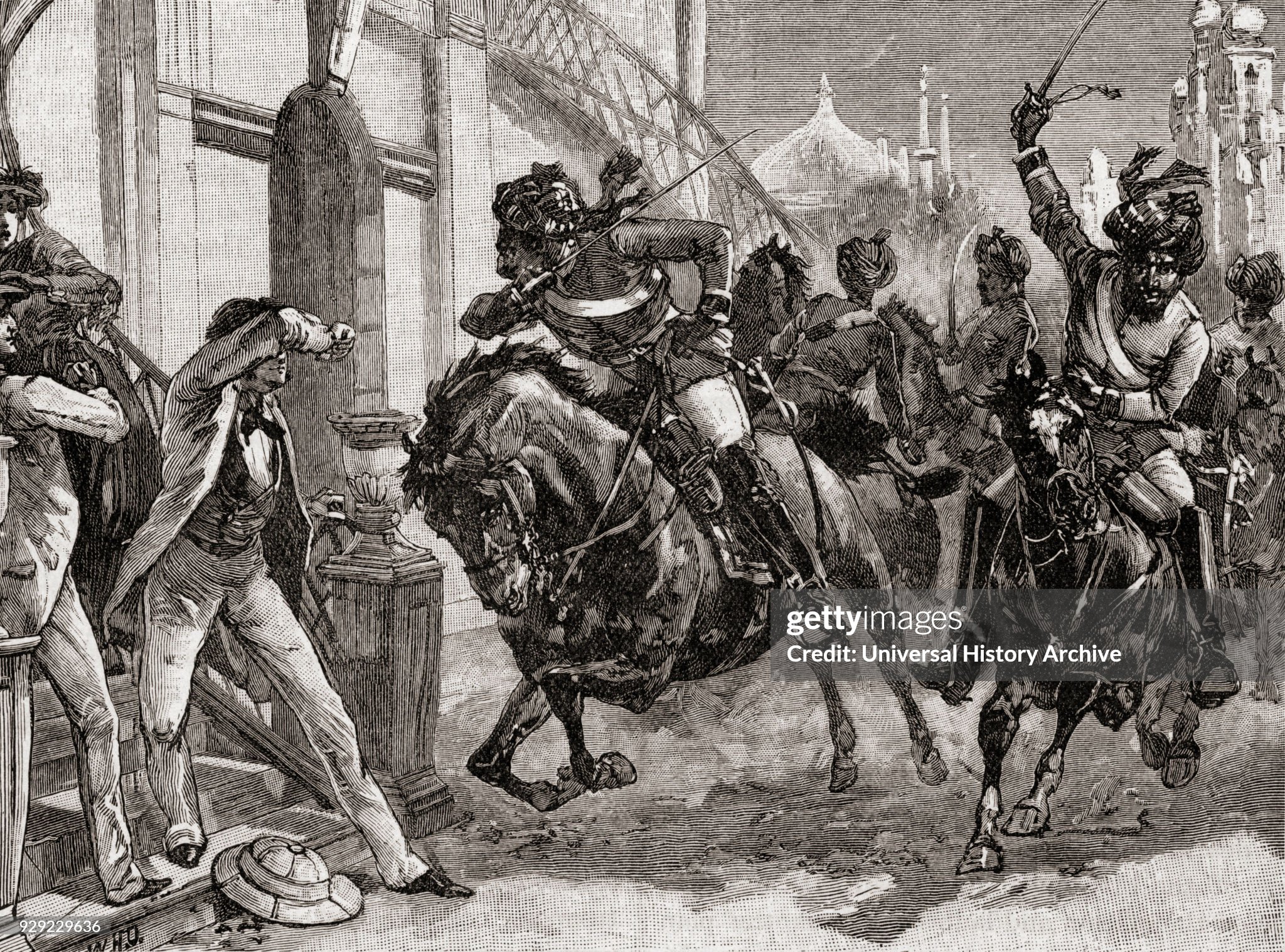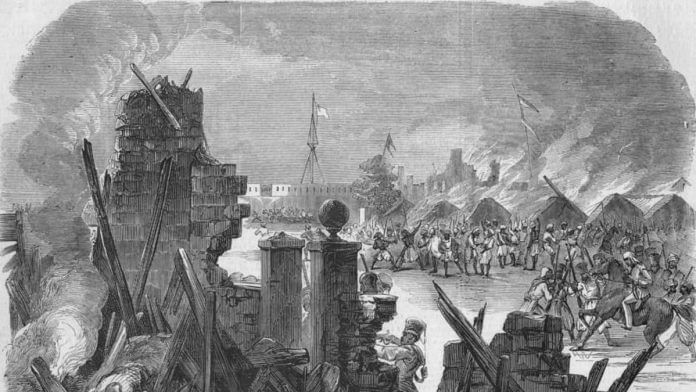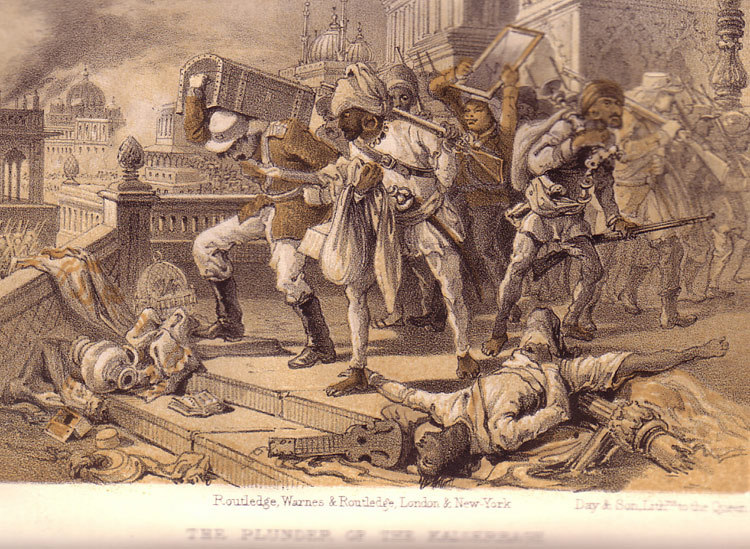

Madras infantry and Calcutta cavalry[supported the british]
Madras
infantry and Calcutta cavalry leaving for Delhi, British Army, by
Gustave Dore (1832-1883), illustration from Musee Francais-Anglais, n
34, October 1857.
Night sortie and attack on baggage wagon near Delhi. (Charles Ball, `History of Indian Mutiny', Vol. I.)
In the triumphal British writings on the rebellion and its suppression, the heroes and villains are depicted from the point of view of the victors, and the same perception is reflected in the pictorial representation of what happened. Is there any way we can reverse the gaze? What was the Indian perception of what happened in 1857?
Many sketches and paintings of 1857 from British hands were reproduced by the British printing press in journals and albums and these have been preserved with care in museums and archives, including those Indian taxpayers paid for. While there is a multitude of such pictures, there is none by Indians of those times, none identified as authentically contemporary. The Indian voice of those times can be heard only in the surviving texts of proclamations and letters and orders and the like, as well as rare first person narratives in the form of memoirs and depositions at trials of the rebels. That alone can help us overcome the silence of the defeated.
- Excerpt from the introduction by Sabyasachi Bhattacharya, Chairman, ICHR, to the exhibition entitled `Representations of 1857: Recovering the Indian Voice'.
The Images have been classified around the major centres of the rebellion, namely, Meerut, Delhi, Kanpur, Lucknow (Awadh) and Jhansi.

ATTACK ON EUROPEAN bungalows in Meerut by sepoys of the 3rd Native Cavalry and the 20th Native Cavalry. (Sir Colin Campbell, `Narrative of the Indian Revolt from its Outbreak to the Capture of Lucknow', London, 1858, page 16.)
DEATH OF COLONEL Finnis on parade ground [May 10, 1857], Meerut.

Interior of a Tent, 1857(?Interior of a tent?, 1857)George Francklin Atkinson |
INTERIOR OF A tent. By G.F. Atkinson. (Reproduction of water colour.)
THE LOTUS FLOWER and the mysterious act of passing of chappatis before the commencement of the revolt.

"Outlying Picket of the Highland Brigade at Benares," a steel engraving from 'The History of the Indian Mutiny' by Charles Ball, London, 1858
Source: ebay, Aug. 2005INDIAN REBELS HANGED. Outlying picket of the Highland Bridge. (Charles Ball, 'History of Indian Mutiny', Vol. I.)

Repulse of a Sortie from Delhi, illustration in Charles Ball, The History of the Indian Mutiny (1858), vol. 1, facing p. 461. By permission of University of Glasgow Library, Archives & Special Collections, shelfmark Store 29766, https://eleanor.lib.gla.ac.uk/record=b2191906.

Incident in the Subzee Mundee. By G.F. Atkinson. (Reproduction of water colour.)

THE BRITISH SACK of Kaiser Bagh, Lucknow (March 18, 1858). W.H. Russell, correspondent of the `Times' (on the left) looks on. (From Charles Ball, History of Indian Mutiny, Vol.I, London, 1858, page 267.)

BATTLE WITH "GHAZIS" (May 5, 1858). Campbell defeated them in the battle of Bareilly; the Ghazis charged, 133 of them being bayonetted.

TATYA TOPE SHORTLY before his execution on April 18, 1859.
| Born | Panduranga Yewalkar 16 February 1814 Yeola, Nasik, Maratha Empire |
|---|---|
| Died | 18 April 1859 (aged 45) Sipri, Gwalior State, British India |
| Monuments | Tatya Tope Memorial Madhya Pradesh |
| Other names | Panduranga Yewalkar |
| Movement | Indian Rebellion of 1857 |